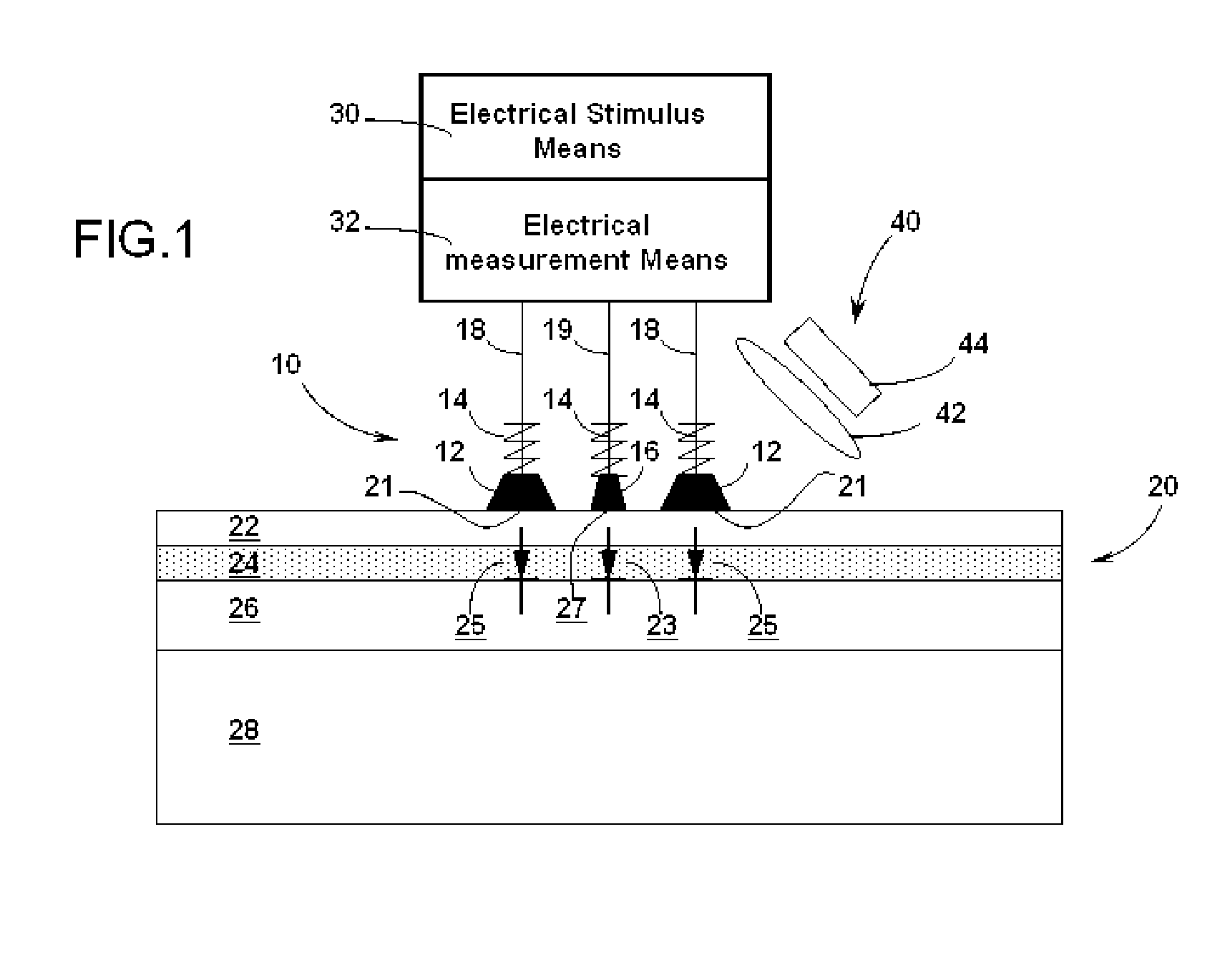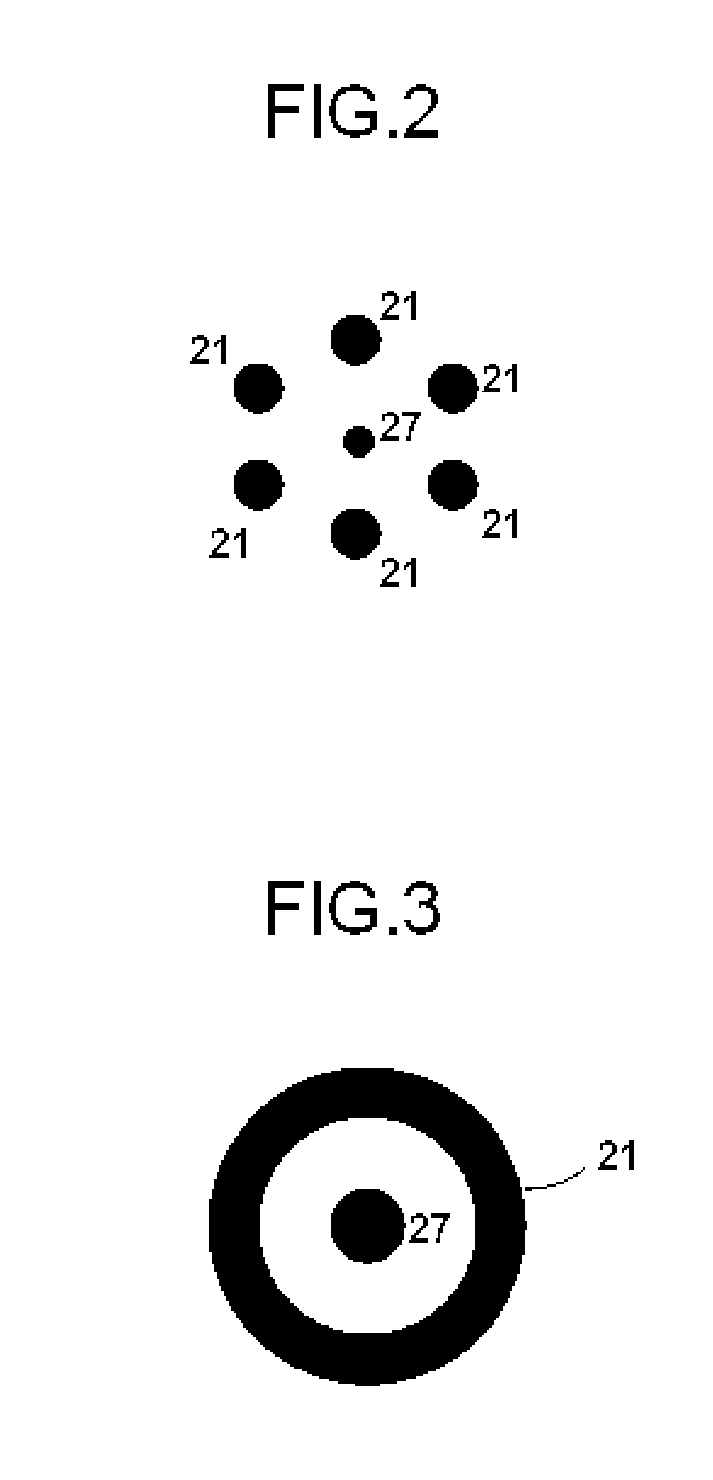Method and Apparatus for Nondestructively Evaluating Light-Emitting Materials
- Summary
- Abstract
- Description
- Claims
- Application Information
AI Technical Summary
Benefits of technology
Problems solved by technology
Method used
Image
Examples
Embodiment Construction
[0021] The present invention will be described with the reference to the accompanying figures wherein like reference numbers correspond to like elements.
[0022] With reference to FIG. 1, a light-emitting material testing method is described in accordance with one embodiment of the nondestructive LED / OLED probe. The nondestructive LED / OLED probe 10 operates upon an associated light-emitting sample 20. The associated sample 20 typically has a plurality of layers 22, 24, 26 which are usually grown on a substrate 28. In FIG. 1, a gallium nitride (GaN) based LED structure is exemplarily shown, which includes a sapphire or silicon carbide (SiC) substrate 28, a p-type GaN region 22 and a n-type GaN region 26. The sandwiched layer between the p-type GaN region 22 and the n-type GaN 26 are AllnGaN (Al: aluminum, In: indium) multi-quantum-well barriers 24 which comprise the active / emissive region of LED device. Electrically the p-type GaN region 22 and the n-type GaN region 26 can be briefed ...
PUM
 Login to View More
Login to View More Abstract
Description
Claims
Application Information
 Login to View More
Login to View More - R&D
- Intellectual Property
- Life Sciences
- Materials
- Tech Scout
- Unparalleled Data Quality
- Higher Quality Content
- 60% Fewer Hallucinations
Browse by: Latest US Patents, China's latest patents, Technical Efficacy Thesaurus, Application Domain, Technology Topic, Popular Technical Reports.
© 2025 PatSnap. All rights reserved.Legal|Privacy policy|Modern Slavery Act Transparency Statement|Sitemap|About US| Contact US: help@patsnap.com



